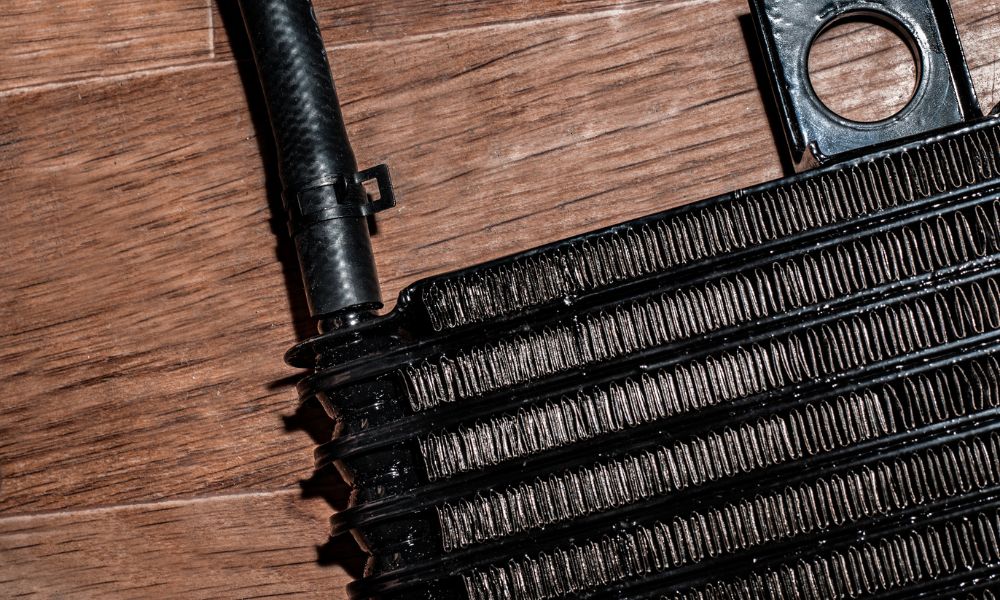
When a transmission cooler wears out, selecting the right replacement is important. You can either purchase a factory-installed OEM or an aftermarket transmission cooler. To help guide your decision, you should understand both options. Let this comprehensive source teach you about the unit selections.
The Function of Transmission Coolers
Transmission coolers helps cool your vehicle’s transmission when it deals with added stress or heat due to hauling heavy objects. Many automatic transmissions fail because they experience overheated fluid. Fortunately, coolers mitigate this issue and act as a line of defense when things become too hot.
You can think of the cooler as an internal AC that helps your vehicle during challenging trips. If your vehicle frequently carries heavy loads, it’s best to invest in a transmission cooler. This addition extends the life of your transmission and prevents system failures. After all, what’s worse than a failing transmission system? Help your car now with this beneficial vehicle part!
Types of Transmission Coolers
To cool your vehicle, there are three types of transmission coolers manufacturers make. Some offer different features, but the main idea is to relieve the transmission.
-
• Tubes and Fin
• Plate and Fin
• Stacked Plate
Understanding OEM and Aftermarket Parts
The original equipment manufacturer, or OEM, is the company that manufactured your vehicle. They carry the same design and quality of your current car parts. When dealing with broken or malfunctioning vehicle components, you can opt for OEM parts to restore quality. As long as you trust the car company and enjoy the original quality, selecting OEM parts is a sound decision.
However, OEM parts are not the only option available to vehicle owners. Aftermarket parts are vehicle components manufactured by a third-party company. They’re similar to your current car parts, but your vehicle’s manufacturer has no affiliation with these companies. Over the years, third-party companies have proven to produce high quality components for all types of vehicles.
When it comes to selecting an OEM or aftermarket part, your preference matters. Essentially, it’s a question of purchasing from the source or an outside option. If you want to maintain the original build and quality of your vehicle, then OEM is the route for you. In contrast, aftermarket parts are strong contenders for updated quality.
Ultimately, whichever route you feel most comfortable with is the route you should choose.
Factory-Installed OEM Transmission Coolers
The main advantage of OEM transmission coolers is that they comply with the car company’s performance standards. They have superior quality because a manufacturer must maintain consistent results. Generally, no vehicle company wants to make a bad name for themselves by producing bad parts.
OEM transmission coolers align with the company’s make and model for their vehicles, especially motor vehicles that people use for hauling. Pick-up trucks and large cars are popular for various hauling applications. That’s why it’s critical for manufacturers to create effective transmission coolers for their automobiles. The original parts ensure durability and the perfect fit every time!
In some instances when an OEM transmission cooler breaks down, car owners can maintain peace of mind when replacing the unit. When you return to the company and seek a new cooler, you don’t have to question whether it will fit. The company has the correct parts for all of their vehicles, and you can quickly restore the unit.
Notable Drawback
Depending on the vehicle and transmission cooler issues, you may find the unit unreliable or not up to your standards. Instead of an official “upgrade,” you will receive a new part with the same function (and quality) of the old cooler. If you experience frequent break downs or consistent problems, OEM parts may become an issue.
A vehicle manufacturer will likely discontinue a part if many car owners experience frequent problems. In these instances, this becomes an issue beyond your control, potentially leading you to aftermarket parts.
Aftermarket Transmission Cooler
The biggest concern surrounding aftermarket parts is quality control. How can you trust an outside source’s performance standards and commitment to car owners? In the past, people strayed away from third-party companies because they didn’t produce quality parts. People feared damaging their vehicles with “outside” vehicle components.
Today, this isn’t the case. Many companies build excellent parts that work for various vehicles. The best factor is that the aftermarket parts are more cost-effective than OEM ones. Imagine purchasing an aftermarket transmission cooler that’s cheaper than the factory unit and has superior performance. The added trust with third-party companies contributes to people’s preference for aftermarket components.
Aftermarket purchases are ideal for car enthusiasts and DIY mechanics, as you can repair (or replace) units on your own accord. Along with saving a pretty penny, different units offer you more variety.
A transmission cooler is important to many vehicles, and you don’t want anything less than the best. You can take a chance on aftermarket products and purchase one for your vehicle. Given the advanced craftsmanship, you may prefer this part over the original car component.
Notable Drawback
You should understand your vehicle’s components before purchasing any aftermarket part. A wrong measurement or incorrect purchase can leave you with an unsuitable part. It’s critical to know exactly what you’re looking for when purchasing a transmission cooler for your vehicle.
Choosing the Right Unit
How do you choose between an OEM and aftermarket transmission cooler? Although this decision is dependent on your preference, there are some things to keep in mind.
Think of OEM as “straight from the source,” giving you a better estimate of performance quality. If you’re not interested in third-party companies, then factory-installed is great for guaranteed consistency. Aftermarket is also a solid choice, as it’s cost-effective and gives you the opportunity to upgrade the transmission cooler.



